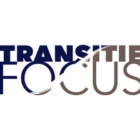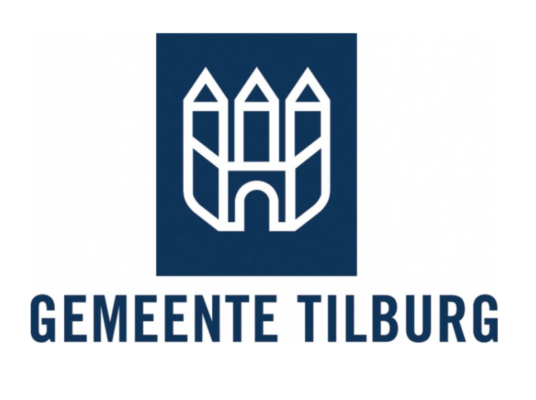According to Harry te Riele of TransitieFocus, if there is one party that will gain ground in complex decision-making in the coming years, it is the citizen. For the Energy Vision for the municipality of Tilburg, he and a team of professionals relied on wisdom of the crowd, or collective intelligence, also known as co-creation. The knowledge and vision of one and a half thousand residents provided food for thought for a select reflective group. In this blog, He explains why the Tilburg municipality decided not to use the citizens’ informal council (focus group of up to 1,000 people, based on a drawing) as originally requested. Some advantages and disadvantages of the hybrid construction, of online and offline dialogue, are discussed. Finally, he advises the public administration to experiment with this new participation-construction.
Involving citizens – betting all chips on focus groups and townhalls?
In the Netherlands, climate debates and environmental discussions have increased the call for the involvement of ordinary citizens in complex decision-making processes. The term citizen consultation is often used in this context. In some cities, this has unlocked the creativity and ownership that decision-makers have been looking for. Certainly, when board members assured the participants that their input weighed heavily in the decision-making, groups started to work seriously. So, should we be betting all chips on the informal citizens’ council or other versions of focus groups and town halls?
No, that’s not a wise thing to do. As we have seen in other transitions, a long period of variation and selection is now beginning for ‘decision-making’, which will probably eventually lead to a transition of public administration. He himself thinks that the next step is the use of the crowd, of a group size without limit, where everyone can share their thoughts, participate, and listen to and learn from each other.
The system is stable as long as it is supported – what about representative democracy?
Let’s go back to the basis. Every social system has disadvantages. If you build a house, someone else cannot walk their dog there. If everyone puts a lock on their bicycle, people lose their keys every day. If a country uses natural gas, it will experience burns, explosions and earthquakes. If you give cars free reign in the city, it will immediately become inaccessible for playing children and the elderly who are suffering from dementia.
Regardless of its scale, a system remains dynamically stable as long as people feel its advantages outweigh its disadvantages. It is reaffirmed every day – repeatedly deployed, repaired and brought up to date with limited modifications. Once, every now-familiar system was an innovation. It fought its way in and became a factor of significance when it scaled up. Society adjusted to it and gradually people became so familiar with it that they no longer realized the disadvantages, nor the doubts and sometimes fierce discussions when it was introduced. They only surface again when the system is changed – sometimes generations later.
For example, as the electric car scales up, many are noticing that it requires 70% less maintenance, can be powered by solar energy, accelerates faster than petrol, is quiet, clean and can be updated remotely. It communicates with other cars and infrastructure, bringing relaxed travel and far fewer deaths within reach. The time-honoured dealer network proves unnecessary. The new construction for remote mobility is no longer a collection of rods, pistons, diesel and V-belts. It is a computer with wheels that, for the first time in a century and a half, does not smell and that you can park in your hallway if necessary. And yes, even the electric variant has its drawbacks, but the advantages outweigh them – at least in the perception of a rapidly growing group of people.
Reading all of this, how is our democracy doing? Which of its drawbacks did we forget long ago? Te Riele has a go at it.

Dialogue with citizens
Emancipation of citizens was also foreseeable in decision-making transitions
It is well known that citizens and residents played a role in the Dutch urban renewal in the 1970s and 1980s and in exposing environmental scandals. However, involving citizens in transitions – major social system changes – was virgin territory when the Ministry of Housing, Spatial Planning and the Environment (in Dutch: Ministry of VROM) published a research / position paper: Een Wereld en een Wil/NMP4 in 2001. After that publication, the ministry asked Te Riele to link substantive transitions to decision-making itself. The answer was a vision in which they criticize how triple helix networks bring together scientists, entrepreneurs, politicians and civil servants for decision-making on transitions, but not those who are actually at the heart of the matter: ordinary people and their ability to stand up for a nice life. To make the foreseeable systemic changes towards sustainability run smoothly, they proposed 21 years ago to give ordinary people (‘citizens/consumers’) a full place in decision-making on transitions. For them, the question is not if but how.
The ministry of VROM, however, was eliminated. The strategists behind the NEPP4 dispersed to other ministries and the EU and their plea for commitment to system innovations came to a halt. Along other lines, however, visions, experiments and publications on linking ordinary people to governance grew worldwide. Smart Cities were combined with IT. Countries such as Singapore, Spain, Canada, Taiwan and Norway formed the leading group. In the Netherlands, however, IT did not play a special role in the recent deployment of citizens – think of local energy debates and area visions.
Back to the municipality of Tilburg.
Tilburg’s Energy Vision: “We are thinking of a citizens’ council”.
When, in the spring of 2021, the Tilburg city council asks the Municipal Executive for more involvement of homeowners in their Energy Vision, organizing a citizens’ council is in the cards. The municipality is thinking of about twenty selected residents who will give their opinion on the Energy Vision and stay on until it is adopted in December.
With the (recent) “Malieveld protest”, the tractors on the highways, the occupied national institute RIVM and the threats on the internet still fresh in their minds, Te Riele and his colleague Esther van der Valk propose a different construction. They support a select reflection group with wisdom of the crowd, i.e. collective intelligence. Below are their arguments and how it worked out in practice.
- When things get grim, it is ethically irresponsible to have ordinary citizens deal with it. In the vision phase of the heat transition, our first argument against a citizens’ council alone is that there is hardly any social friction. This can change as soon as homeowners are obliged to invest. In the awkward situation that then arises, it is ethically irresponsible to have a small group of citizens deal with it, not to mention the political risk for the Municipal executive. They suggested that the municipality set up a – what was soon called – TilburgerTafel (Tilburg Table ed.) of twenty people to back them up with online dialogues based on open-ended questions and many citizens.
Per dialogue, many Tilburg citizens (they write: “preferably thousands”) anonymously answered questions about the Energy Vision. Their anonymized answers are passed on by CircleLytics Dialogue in small portions to other homeowners, with the request to rank them and provide comments.
No sooner said than done. After six weeks, the team was able to feed the TilburgerTafel with anonymized, ranked and supported responses from the first 700 Udenhouters, Berkel-Enschotters, Biezemortelers and Tilburg citizens, with top and bottom lists of most embraced and most rejected responses, as well as arguments for and against. This gives the TilburgerTafel a flying start and a fundamentally different one. In four months’ time, the group will meet six times to reflect on intermediate results, follow-up questions and fragments for the citizens’ advice. During the seventh, they will address specific dilemmas together with councillors. Members of the Tafel handed over their citizens’ advice on the spot in 56 large-format slides (see photo). A journalist from the Brabants Dagblad observes the strong group cohesion with amazement.
Meanwhile, fed by thousands of ranked answers and comments, the TilburgerTafel is much stronger in its advice. A high level of satisfaction among the participants in the online dialogue (8.5 on a scale of 10) further strengthens this position. When council members frequently quote statements and recommendations from the citizens’ advice in their debates, explicitly compliment the TilburgerTafel and unanimously adopt the Heat Vision, the participants will feel that they have participated in something worthwhile!
- Twenty people do not cover 70,000 households. Besides the ethical consideration, there is a second reason to use digital tools and collective and artificial intelligence. A citizens’ council cannot cover the diversity of 70,000 households, let alone in combination with the investment space per family, the basic attitude of the homeowner towards the entire heat transition and other peculiarities. With collective intelligence and CircleLytics Dialogue, this becomes easier. Diversity, majorities, minorities, clusters, deviating opinions, aversion to change in general; when using deliberately, open-ended questions you can get them to surface relatively easily. By larding the citizens’ advice with hundreds of literal answers, every subgroup feels seen, even if it is a minority and the council chooses a different route than it advocates. Decision-makers on their side get authentic material on their tablet or computer, with quality regarding process and content including a lot of spelling and stylistic errors. From now on, the policy can differentiate more precisely: by neighbourhood, income situation, house type, year of construction, psychological attitude, claimed autonomy and other key issues.
In order to get a feel for the deviation of the TilburgerTafel from the average homeowner, both responded to a few questions about the weighting of values. The TilburgerTafel turned out to be slightly greener than the average online participant and incorporated this awareness into its advice. From the very first Tafel meeting, a coordinator derived fragments for the citizens’ advice from the discussions. In the four months that followed, these became more complete, broader and deeper. The process progressed along three tracks: knowledge and trust between the members of the TilburgerTafel, regarding depth, breadth and design of the citizen advice and a growing relation between the municipality and eventually more than one and a half thousand participating Tilburg citizens, spread over the neighbourhoods of the city. Upon completion, the officials also have a list of residents who say they will become active in their neighbourhood for the Neighbourhood Implementation Plan.
- Draw does not automatically produce a group that solves complex problems. Those interested in the TilburgerTafel registered after calls in old and new media. From the sixty candidates, they chose twenty. Why did they refuse a draw? To reduce the risk that this group of 20 members is ill-equipped for complex problem solving. Whereas transition thinking at the turn of the century focused on frontrunners, it gradually became clear to Esther van der Valk and Te Riele that the dynamics of growth are strongly influenced by those who naturally feel at home in the upper half of the S-curve (growth curve). In other words: a transition goes as fast as those who do not want to grow. Smooth transitions require cooperation between people who are divided along the growth curve. This will result in better quality decisions. A decision that is supported by more people.
A second reason for not drawing lots is that people and matter are both important in a transition. A TilburgerTafel consisting of both people-attached and matter-attached characters covers the content of the problem as a group, as well as the social processes required to find a new direction. Here too, a small group runs the risk of missing this balance. In online dialogues in which 1500 Tilburg residents participate, these balances are not a problem and, looking back, we see this confirmed in the distribution of types of answers and comments.
Finally, Te Riele indicates that it makes a difference whether a group member is a specialist on a part of the growth curve or naturally has an overview of the whole, i.e. from creation through growth, exploitation and decline to dismantling. In a transition, all these processes occur simultaneously. As far as TransitieFocus is concerned, the TilburgerTafel should therefore have a variety of characters: 1) explorers and perpetuators, 2) people- and content-oriented characters and 3) specialists on the growth curve and generalists. Literature on complex problem-solving suggests that such a cognitively diverse group will produce faster and better results. From sixty applications, we formed a citywide group of twenty. Using playful introductory questions, we checked them at the outset for cognitive diversity. Years of experience with transition assessments are an advantage at such times, says TransitieFocus.
- The importance of open dialogues. So, a cognitively diverse group, strengthened by thousands of answers from three online dialogues with the city. Why did they ask open-ended questions in those dialogues instead of the more common polls and surveys? The answer lies first of all in the concept of dialogue. Dialogue is about learning from other people’s points of view and then rethinking your own. Dialogue is therefore about change. The Tilburg answers indeed show how large groups sometimes shift their opinions after reading 20, 40 or even more answers from others. By asking open-ended questions and allowing others to assess their answers, the city increases cohesion among thousands of people. In this way, decision-making progresses at this early stage. Polls and surveys do not do this. The literature on participation also points out that asking questions conveys an open attitude and trust – an essential feature of transitions in which various parties have to face the future together.
- Polarization is lurking. Back to the summer of 2021. As the TilburgerTafel progresses, it turns out that extreme answers – positive and negative – are judged by other homeowners as being of little use. As a result, the process did not become bogged down in deadlocks caused by flanking positions. The discussion runs through a nuanced midfield. Because of the absence of one moment and one place where ‘IT’ should happen (a meeting / workshop), the explosion of contagious enthusiasm that may characterize a citizens’ council may be lacking. Tilburg is more characterized by anonymity, tranquillity and time for reflection. Notifying the police, for instance, is not necessary. Officials, the council committee and boards are gradually warmed up with intermediate results.
Curious? Plan your demo or just an exchange of thoughts with the CircleLytics team here.
Extreme answers do of course come in. The coordinator includes them in the advice as an illustration, but these extreme views do not hijack the discussion. Moreover, by making the thousands of answers and comments on them available to all Tilburg residents in one Excel file, everyone can check the choices of the coordinator afterwards. For dyslexics, a Word version is online.

Successful? Drawbacks? Ready? Future?
Was the test of Model Tilburg successful? Many think so. Is the construction without disadvantages? Of course not. It was a hell of a job. Everything had to be invented, the team made mistakes. Some of them could not go on holiday and because of the Corona pandemic almost everything had to be put online. Some members never met each other live.
Is this scalable? Yes, it is. However, in Tilburg, politicians and officials gave the team exceptional freedom and trust. I’m extremely curious to see whether Model T will work with other teams, in other cities and on other transition issues.
Is Tilburg ready now? No. The team saw the trust between parties grow. With a heat transition that will take decades, it is unwise to abandon the dialogue structure now that the global vision has been established. A long-term relationship of trust between the municipality and entering and remaining in dialogue with thousands of residents and the parties around them could prove crucial as soon as the transition lands on doorsteps. The future? If this innovation scales up, sooner or later it will rub off on the usual routines. If Model T succeeds in solving forgotten and new problems that our traditional representative democracy can barely cope with, the latter will be painfully curtailed. The outcome of that struggle depends on the wisdom of those who decide. Te Riele would personally recommend Model Tilburg to them.
Contact Harry te Riele or Esther van der Valk from TransitieFocus here or contact the CircleLytics team here.
(This is an adaptation of an article that appeared in the Dutch magazine Ruimte + Wonen, nr 1, 2022, published by Aeneas).


